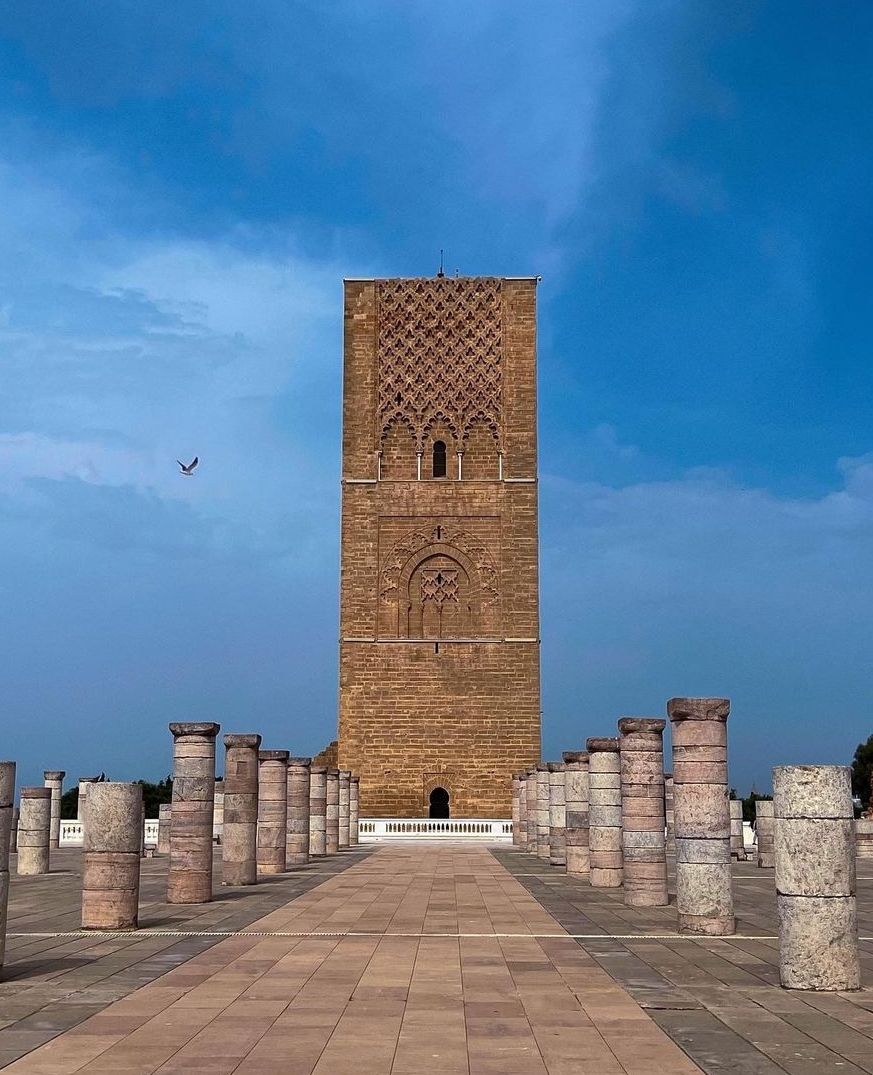Hassan Tower History
The history of the Hassan Tower is a story of stones that dates back to the 12th century. In 1195, Sultan Yacoub al Mansour ordered the construction of the largest mosque in the world, of which the Hassan Tower was to be the minaret. The Sultan ordered the construction of the tower at the meeting point between the Bouregreg River and the Atlantic Ocean. It takes up a place on the axis linking the Al-Koutoubia Mosque in Marrakech and the Giralda in Seville. Today, the Hassan Tower acts as a spiritual, architectural and cultural link between Africa and Europe.
History of the Hassan Tower: From construction to World Heritage listing
The Almohad ruler Yacoub Al Mansour ordered the construction of the Hassan Tower between 1195 and 1199. This Moroccan dynasty ruled over much of North Africa and Spain during the medieval period and it’s known for its monumental architecture .
Actually, it was part of a larger architectural complex which was also to include a mosque, a palace and a garden. The ambitious project unfortunately ends prematurely after the death of Al Mansour.
However, over the following centuries, earthquakes had a detrimental effect on the Hassan Tower and the columns surrounding it. At the beginning of the 21st century, the Moroccan authorities undertook restoration work to safeguard the tower for future generations.
Today, the Hassan Tower is an important symbol of the city of Rabat. Indeed, it is listed as a UNESCO‘s World Heritage Site. It is also the place of several official ceremonies (including the visit of Pope Francis to Morocco).


Hassan Tower : A jewel of Almohad architecture
The architecture of the Hassan Tower in Rabat, neighboring the Mausoleum Mohammed V, is an outstanding example of Almohad architecture. An architectural style that dominated the region during the period of the 12th and 13th centuries.
It is an unfinished minaret that should have been part of a grand mosque. It is 44 meters high and it is one of the largest minarets ever built in the Maghreb in its time.
A complex and decorative architecture characterizes the Hassan Tower. It is built of red sandstone and is adorned with geometric patterns and carved decorations. In addition, frieze motifs decorate the arcades surrounding the tower. As well as the columns are also decorated in a geometric patterns.
The architecture of the Hassan Tower is a remarkable example of Almohad era. With its sister Koutoubia, the buildings show the influence of this architecture throughout the Middle East and North Africa to the present day. It is indeed a testimony to the ingenuity and creativity of the architects and builders of the time. They were able to create a complex and decorative building that has stood the test of time.
The Hassan Tower is today a popular tourist site and a symbol of the city of Rabat.
